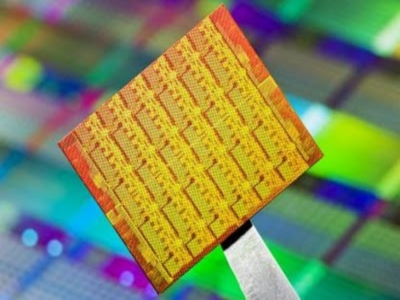Analysts, Vendors Discuss Future of Mobile Processing Power
IHS analyst Francis Sideco and Matt Wuebbling, director of Nvidia's Tegra marketing, have discussed the future of mobile processing power.
While smartphones with the latest quad-core chips boast a compelling component and buying point for consumers, Sideco warned that chip companies, handset manufacturers and wireless carriers will begin to focus more on the core experience of a handset such as a smoother experience, larger displays with higher-resolution graphics and improved battery life.
"That's the end game for a lot of these semiconductor companies: connect great experiences and long battery life with their chip," said Sideco.
"Quad-core CPUs will have become the standard for mobile devices," explained Wuebbling. "While some may try to move beyond quad-core, we don't believe there will be a perceptible user benefit."
While Wuebbling believes a five or six-core smartphone won't come into fruition anytime soon, Samsung is said to be preparing one of the first eight-core devices in the form of the Galaxy S4, alongside the rumored ZTE Apache.
Without having the advantage of having more cores in terms of a sales pitch, companies such as AMD, Intel, Nvidia and Qualcomm face the inevitable task of working harder to market their chips. "It's what's keeping their chief marketing officers up at night," Sideco said.
In addition to having central CPU cores, future Snapdragon chips will sport specialized "blocks" that reduce the strain on the main cores. Instead, it'll handle specific tasks such as controlling the sensors or managing the camera lens, so says Raj Talluri, vice president of product management for Qualcomm's CDMA technologies unit.
Get Tom's Hardware's best news and in-depth reviews, straight to your inbox.
"We want to make sure that you don't have to charge the phone every day, even if you have that flagship smartphone with the big camera, Wi-Fi, big display, and navigation," he said. "You can't keep packing in bigger batteries because people are used to thin phones."
The extension of a battery life has also been singled out as a priority by companies including Nvidia, who is planning to utilize a fifth "stealth" core that helps to save battery life, while upcoming technology could generally double battery life.
"In 2013 you'll see the gap between console and mobile games almost disappear," Wuebbling stated, referring to the graphical fidelity. Future devices should also feature better camera capture and editing capabilities, he added.
Apple began the trend of higher resolution displays with the PPI (pixels per inch) found in the iPhone's 'Retina' display, while other manufacturers have followed suit. HTC, for one, implemented PPI of 440 in the Droid DNA, with Retina managing PPI of 326.
"It's not necessarily a speeds and feeds discussion anymore, but more about an emotional attachment to the brand," Sideco concluded.

Zak Islam is a freelance writer focusing on security, networking, and general computing. His work also appears at Digital Trends and Tom's Guide.
-
sykozis How about they start working on making a smartphone....that can function properly as a phone? I've had 4 smartphones...only 1 of which didn't have it's "phone" functionality gimped to the point of being almost entirely useless. Both my Samsung phones....useless as a cellphone. My HTC Trophy, as long as you don't need to understand the person you're talking to, it almost works. My old Blackberry Pearl....was barely a smartphone but worked flawlessly as a cellphone. Seems as phones advance....the ability to make phone calls (which was the entire point of a phone) seems to be more lacking. I don't care if I have to charge my "phone" every night.....if it can't make a phone call, the battery life isn't going to convince me to buy it.Reply -
guess who Ignorant ZakReply
Please do some research before you comments on the Samsung 8 core CPU. Facts matter and you are distorting them. -
Gundam288 mikenygmailThe future of mobile processing power is the AMD APU, Acclerated Processing Unit.Putting all of your eggs in one basket is not a smart move. Also, we are not at the point where we can put a x86 CPU or APU in a phone yet. And at that point something better than the APU might come along.Reply -
john15v16 Reply"Quad-core CPUs will have become the standard for mobile devices," explained Wuebbling. "While some may try to move beyond quad-core, we don't believe there will be a perceptible user benefit."
Anybody remember the days of the old 286, 386 and 486 days... analysts made similar assumptions back then as well... -
g00fysmiley Reply"You can't keep packing in bigger batteries because people are used to thin phones."
says who? i like my samsung galaxy nexus.. but if they had two models there one with the current thin 1850 mah battery and another thicker model with a 4k+ mah battery.. not only would i choose the bigger phone hell i'd have even paid more for the 4k+ battery -
Marcus52 I don't think Wuebbling has ever played any console games, and they are about to get a major upgrade, too.Reply
-
dark_knight33 g00fysmileysays who? i like my samsung galaxy nexus.. but if they had two models there one with the current thin 1850 mah battery and another thicker model with a 4k+ mah battery.. not only would i choose the bigger phone hell i'd have even paid more for the 4k+ batteryReply
Every phone I've owned (except old iPhone) has had an expansion battery accessory that offered better battery life and made the phone thicker, offering *you* that option. While I appreciate a phone that I don't *need* to plug in every night (my S3 is awesome like that), I would rather not have a brick next to my face, or in my pocket.
Battery technology is only innovating because phones are getting thinner. If most people didn't care how thick a phone was, you'd still be using a NIMH battery in that phone your carrying now.
You can keep your early 90's cell phone design. I'll take better technology and smaller batteries thank you. -
alidan sykozisHow about they start working on making a smartphone....that can function properly as a phone? I've had 4 smartphones...only 1 of which didn't have it's "phone" functionality gimped to the point of being almost entirely useless. Both my Samsung phones....useless as a cellphone. My HTC Trophy, as long as you don't need to understand the person you're talking to, it almost works. My old Blackberry Pearl....was barely a smartphone but worked flawlessly as a cellphone. Seems as phones advance....the ability to make phone calls (which was the entire point of a phone) seems to be more lacking. I don't care if I have to charge my "phone" every night.....if it can't make a phone call, the battery life isn't going to convince me to buy it.Reply
on a land line, i cant understand people, or even tell who they are.
i hate phones of any kind
hell, you want me to like a phone? make its sound quality as good as google talk.
give me a 100$ mic and a 100$ speaker and let me hear it in the quality...
make the phones a bit thicker to accomidate it,
thats all i really want, i want to be able to hear the difference between people, i want to know who they are on voice alone. -
DryCreamer I just hope it doesn't stagnate like display tech has done. I mean, 1080p is a LOW resolution and has been for years, same with consoles. DirectX9 just won't die because there has been no need to advance as long as we keep spending money on stale techReply
